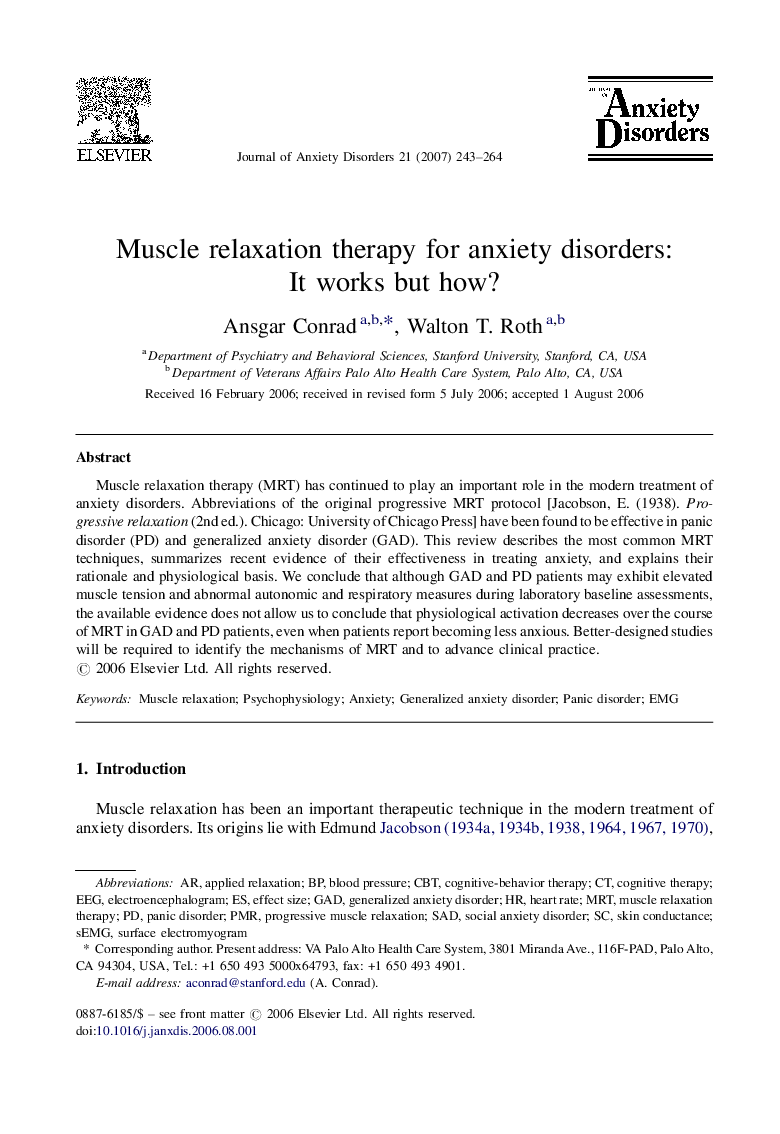| Article ID | Journal | Published Year | Pages | File Type |
|---|---|---|---|---|
| 909850 | Journal of Anxiety Disorders | 2007 | 22 Pages |
Muscle relaxation therapy (MRT) has continued to play an important role in the modern treatment of anxiety disorders. Abbreviations of the original progressive MRT protocol [Jacobson, E. (1938). Progressive relaxation (2nd ed.). Chicago: University of Chicago Press] have been found to be effective in panic disorder (PD) and generalized anxiety disorder (GAD). This review describes the most common MRT techniques, summarizes recent evidence of their effectiveness in treating anxiety, and explains their rationale and physiological basis. We conclude that although GAD and PD patients may exhibit elevated muscle tension and abnormal autonomic and respiratory measures during laboratory baseline assessments, the available evidence does not allow us to conclude that physiological activation decreases over the course of MRT in GAD and PD patients, even when patients report becoming less anxious. Better-designed studies will be required to identify the mechanisms of MRT and to advance clinical practice.
